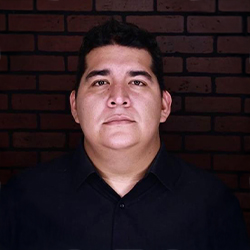Math and Physics for NDT: Ultrasonic Testing 10 November 2025
Explore the math and physics concepts used in ultrasonic testing. This course covers acoustic properties, wave behavior, flaw detection calculations, and techniques such as phased array scanning, time-of-flight diffraction, and immersion testing.
Member: $400
Credit Info
- Contact Hours: 7
- IACET CEUs: N/A
- Valid for ASNT Level III recertification: Yes
Course Overview
This course provides a comprehensive foundation in mathematical principles essential for UT applications.
It is split into two sections, the first is a pre-requisite section where learners will strengthen essential mathematical skills by mastering numerical formatting, unit conversions, exponents, and logarithms while applying the order of operations to solve equations. You will also explore trigonometric principles, including right triangle properties, Pythagorean theorem, and sine functions, to build a strong foundation for technical and engineering applications.
The second part of the course relates to math and physics concepts that UT technicians may encounter. This course provides concepts in ultrasonic testing principles, covering key acoustic properties such as frequency, velocity, amplitude, and decibels. Learners will explore sound interactions with materials by calculating acoustic impedance, reflection, and transmission coefficients, as well as applying Snell’s Law to determine refraction and critical angles. The course delves into flaw detection techniques, including time-of-flight calculations, resonance frequency, and transducer properties like bandwidth and damping. Participants will analyze sound intensity distributions, gain control, and decibel-based amplification while computing pulse duration, test object thickness, and sound paths for weld inspections. Advanced topics include phased array scanning, time-of-flight diffraction (TOFD), raster scanning, and immersion testing techniques for precise defect detection. By the end of the course, learners will be equipped with enhanced mathematical skills to perform ultrasonic testing procedures.
*Students will need access to a Casio FX-260 Solar or other non-programmable scientific calculator for use during the course
Upon Completion, Learners Will Be Able To:
- Define key acoustic properties, including frequency, velocity, amplitude, and decibels, and apply mathematical formulas for sound wave calculations
- Calculate acoustic impedance, reflection, and transmission coefficients to understand sound interactions with different materials
- Use Snell’s Law to determine refraction angles and critical angles for wave propagation
- Explain the principles of flaw detection, including sound velocity, probe delay, and time-of-flight calculations
- Define resonance frequency and calculate fundamental and higher-order frequencies based on material properties
- Explain the function and ideal impedance of a matching layer in ultrasonic transducers
- Define bandwidth, quality factor, and damping, and calculate transducer bandwidth
- Differentiate sound intensity distributions in near and far fields and calculate near-field distance and beam-spread angles
- Explain gain control, decibel calculations, and the impact of amplification on displayed signals.
- Compute pulse duration and linear step size based on encoder and PPR data
- Calculate test object thickness using single-element and delay-line transducers
- Diagram and compute sound paths, skip distances, and beam index points in angle-beam weld inspections
- Determine the optimal water path to minimize interfering echoes in immersion testing.
- Explain ultrasonic raster scanning techniques and calculate overlap percentages for defect detection
- Calculate defect ratings and attenuation factors based on sound path and defect level.
- Describe TOFD principles and determine discontinuity depth from TOFD data
- Differentiate beam focusing and steering, explain phased array scanning, and identify key system components
Meet the Instructor

Jorge Reyna
Jorge is a seasoned NDT, welding, and coatings inspection professional with extensive field experience across Mexico, Panama, Ecuador, and China. He holds ASNT Level III certifications in multiple methods, is an AMPP Master Coatings Inspector, AWS SCWI, and ACI Certified Concrete Field Testing Inspector. Fluent in Norwegian and Italian, Jorge brings global expertise to every project. Since 2013, he has managed his own inspection firm, JRSA Inspections, based in Monterrey, Mexico.
Questions? Contact us at education@asnt.org